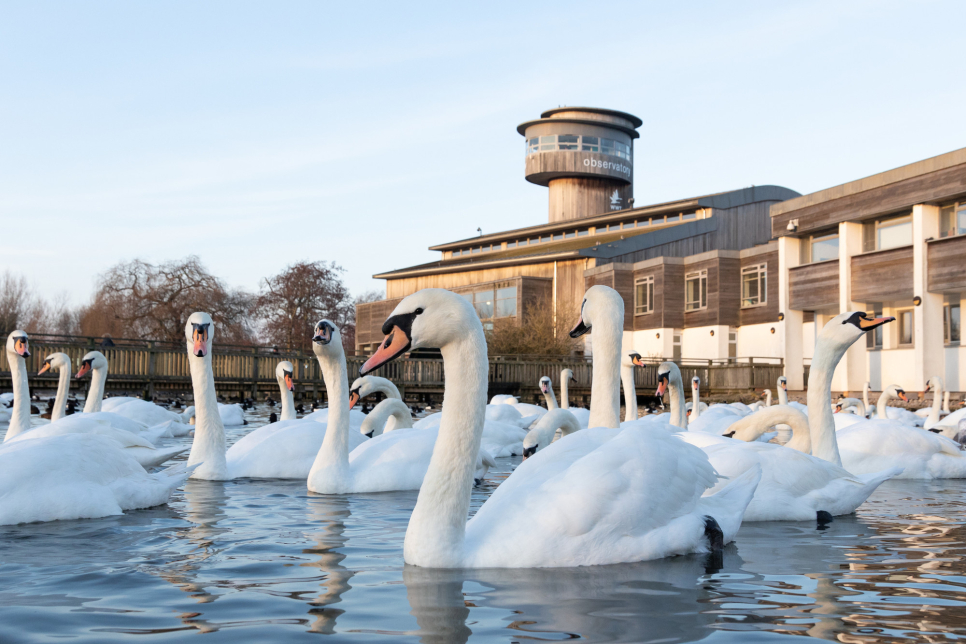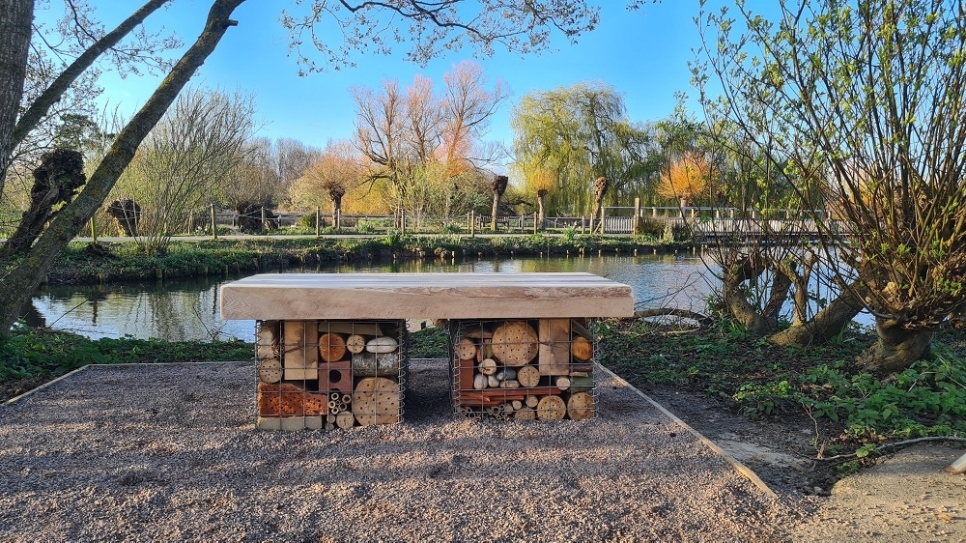Kingfisher breeding is in full swing
Spring has truly sprung at WWT Slimbridge with a whole array of breeding activity for many species. In particular, there has been a wave of activity with two pairs of kingfishers breeding at the centre.
Spring has truly sprung at WWT Slimbridge with a whole array of breeding activity for many species. In particular, there has been a wave of activity with two pairs of kingfishers breeding at the centre.
It is estimated that there are 4,900 breeding pairs of kingfishers in the U.K. and with two pairs breeding at Slimbridge, including one pair offering visitors fantastic views from the Kingfisher Hide.
The activity begins with the renovation an old nesting burrow or a construction of a new one in the kingfisher bank; a vertical wall of soil about 2 metres high. The nest burrow can be up to 1 metre long in length, rising slightly from the entrance hole. Once a home is chosen for the pair, the male will presents fish to the female in order to get her into condition to grow, lay and incubate the eggs. There is frequent mating throughout this period which took place from the end of March to early April.
They incubate typically 5-7 eggs for about three weeks. Now in late April, the eggs have hatched and the kingfishers spend around four week raising the chicks with both the male and female feeding them in the nest hole with up to a hundred fish a day including some aquatic invertebrates. The kingfishers start by choosing small fish to feed the young with and as they grow, they are given bigger fish to eat.
The juveniles will then fledge the nest and may stay around the bank for a couple of days but the parents will chase them off as prepare for a second brood. In previous years, the juveniles have been spotted around the South Lake and Martin Smith hide as this has been a good place for them to fish.
Dave Paynter, Reserve Manager at WWT Slimbridge says;
“The pair should be very active over the next couple of weeks at the purpose built Kingfisher Hide. This is a great time to come and see them as they have started feeding the youngsters; we expect them to fledge around the May half term week from 25th May onwards if all goes well”.
Kingfisher facts:
- It is estimated to be around 4900 breeding pairs of kingfishers in the UK
- The oldest known kingfisher was just over 4.5 years old, based on the ringing data
- Kingfisher mating is essentially monogamous, pair-bonds sometimes lasts from one breeding season to next, changing mate and territory during breeding season is not uncommon.
- The sex of each kingfisher is easily identified; the female has an orange edging to her otherwise black bill, so the females wears ‘the lipstick’. The males have a full black bill.
Image credit: Roger Byng


